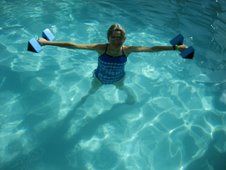Physical Activity Adherence and Quality of Life among Individuals with Arthritis
By Kelsey Stamps
Austin, S., Qu, H., & Shewchuk, R. M. (2011). Association between adherence to physical activity guidelines and health-related quality of life among individuals why physician-diagnosed arthritis. Quality of Life Research, 21, 1347-1357.
Purpose:
Physical activity is an important, non-pharmacological intervention to diminish pain and discomfort and to improve health-related quality of life in individuals with one of the most prevalent chronic conditions, arthritis. Health-related quality of life (HRQOL) is an indicator of physical and mental health, and a population’s chronic disease load. It evaluates the impact of arthritis, which is a leading cause of disability both in the U.S. and internationally. Adults with arthritis have poor HRQOL and, on average, report four more physically unhealthy days and 2.3 more mentally unhealthy days (within a 30 day period), compared to those without arthritis. After assuming that HRQOL for adults with arthritis would be predicted by adherence to physical activity guidelines controlling for health system factor (physicians’ recommendations for physical activity), pre-disposing, enabling, and need-relation factors, the authors hypothesized that individuals who did not adhere to recommended levels of physical activity would report more physically and mentally unhealthy days compared with those who did, controlling for physicians’ recommendations, predisposing, enabling, and need-related factors.
Physical activity is an important, non-pharmacological intervention to diminish pain and discomfort and to improve health-related quality of life in individuals with one of the most prevalent chronic conditions, arthritis. Health-related quality of life (HRQOL) is an indicator of physical and mental health, and a population’s chronic disease load. It evaluates the impact of arthritis, which is a leading cause of disability both in the U.S. and internationally. Adults with arthritis have poor HRQOL and, on average, report four more physically unhealthy days and 2.3 more mentally unhealthy days (within a 30 day period), compared to those without arthritis. After assuming that HRQOL for adults with arthritis would be predicted by adherence to physical activity guidelines controlling for health system factor (physicians’ recommendations for physical activity), pre-disposing, enabling, and need-relation factors, the authors hypothesized that individuals who did not adhere to recommended levels of physical activity would report more physically and mentally unhealthy days compared with those who did, controlling for physicians’ recommendations, predisposing, enabling, and need-related factors.
Conclusion:
Individuals who did not adhere to the physical activity guidelines had more physically and mentally unhealthy days. By engaging in low- to moderate-intensity physical activity of approximately 150 minutes per week, evidence shows that individuals with arthritis had some degree of relief from pain, improved their physical function, and delayed onset of disability. The 150 minutes per week consisted of five 30-minute sessions. However, this study proved that adherence to physical activity is low in this population and interventions are needed to connect adults with arthritis to participate in physical activity. It is recommended that even if adults with other co-morbidities cannot meet at least 150 minutes per week they should still be physically active as much as possible whenever their conditions and abilities allow.
Individuals who did not adhere to the physical activity guidelines had more physically and mentally unhealthy days. By engaging in low- to moderate-intensity physical activity of approximately 150 minutes per week, evidence shows that individuals with arthritis had some degree of relief from pain, improved their physical function, and delayed onset of disability. The 150 minutes per week consisted of five 30-minute sessions. However, this study proved that adherence to physical activity is low in this population and interventions are needed to connect adults with arthritis to participate in physical activity. It is recommended that even if adults with other co-morbidities cannot meet at least 150 minutes per week they should still be physically active as much as possible whenever their conditions and abilities allow.


No comments:
Post a Comment